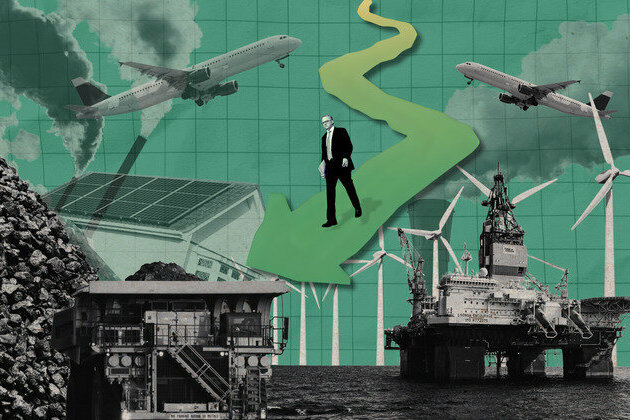2LT National News
No room for the timid: setting Australia’s 2035 emissions target is a daring tightrope act
Aug 25, 2025
Share article
Print article
Any week now, Australia will set its 2035 emissions target. It must signal the nation’s strong ambition on climate action, to drive policy and investment. And it must avoid being seen as either unrealistic or too costly. The decision is not an easy one for Prime Minister Anthony Albanese and his cabinet.
If any Australian government has had a clear runway for ambitious climate policy, it is this one. A successful first term, and a landslide win in an election partly fought over climate and energy policy, gives the Albanese government an opportunity for a lasting legacy.
But the tightrope the government must walk spans a wide gulf. The Climate Change Authority’s draft advice floated emissions reduction of 65-75% by 2035. Environment groups are gunning for the high end of the range; some business groups agree, but others won’t.
Yet even a 65% target, at the low end of the range, would mean halving Australia’s current emissions.
The challenge is formidable – but now is not a time for timidity on Australia’s climate policy.
Under the Paris Agreement, Australia’s 2035 emissions target is due by the end of September.
Our 2030 target is a 43% emissions reduction, based on 2005 levels. Australia is far from reaching that goal. It can still be achieved, but quick, drastic change is needed.
Australia’s national emissions are at around 28% below 2005 levels. They fell 1.4% over the last year, to almost the same level as three years ago.
Any emissions reduction target of 60% or more for 2035 will be highly ambitious. It would require deep, rapid emissions cuts across the economy.
But it’s technically possible. And it’s desirable economically – to attract investment and position Australia for long-term success.
The main question is not precisely what 2035 target the government sets. Rather, it’s whether the government follows through – with stronger and extra policies – and if business will get on board.
Useful policies were enacted during the last term of government – for industry, renewables supply and cars. But these are tender beginnings compared to what’s needed.
An economy-wide carbon price at a sizeable level would be ideal. However, the eternally adverse politics under the “carbon tax” label seem to rule it out.
Instead, the government could deploy and calibrate a range of policies in all sectors to achieve a comparable effect. These include emissions markets, regulation, tax and subsidies.
The Productivity Commission has called for a nationally consistent emissions-reduction approach guided by a set of “national carbon values“, representing the implied carbon prices needed to meet Australia’s net-zero goals.
The higher the implied carbon price, the greater the incentive for businesses and others to reduce emissions. These benchmarks would be used by government to ensure efforts are efficient, coordinated and on-target.
Any implied carbon price would need to rise far beyond levels in Australia’s carbon credit markets – currently about A$30-40 per tonne of carbon dioxide.
The European Union’s emissions trading price, for example, has recently been around 70 or A$130 per tonne.
Australia’s fuel excise, converted to carbon terms, is about $190 and rising. Infrastructure Australia, which now requires greenhouse gas emissions to be valued in project proposals, pegs the carbon value at more than $200 a tonne for the 2030s, and rising.
Old coal power plants are being replaced by wind, solar and energy storage. But progress in the clean energy transition is much slower than what’s needed.
The government’s underwriting scheme takes care of investor worries about low wholesale power prices in future, by guaranteeing a base level of revenue. But proposed power line and clean energy projects are stuck in the quicksand of objections and assessments.
State and federal governments must snap out of the business-as-usual approach to regulation and approval, which is not geared for rapid change.
The tightrope here is between jumping in to rebuild the power supply system as an urgent national priority, and bowing to fears and grumbles – some amplified by politicians – about higher electricity bills, power lines and wind turbines.
For industry, the tightrope spans necessary modernisation on one side, and the risk of industrial closures on the other.
The Safeguard Mechanism encourages businesses to cut emissions, by requiring them to buy carbon credits if they exceed a certain limit. But the credit market prices are far too low to drive the required investment.
Reform is needed. It could mean tightening rules for carbon credits produced by projects that store carbon in the land sector. It might mean limiting industry’s use of carbon credits and increasing the rates of emissions reduction by each facility. Or it might involve setting a minimum price for carbon credits in the market, and increasing the maximum price.
In land use, forestry and agriculture, very little is being done to reduce emissions.
Much could and should be done. The current carbon credit scheme is inherently limited. Governments must get much more active.
That may mean buying marginal lands for conservation. It might mean regulating land use and forestry more actively, and combining biodiversity projects with carbon storage. It might also mean subsidising new green practices in agriculture.
The tightrope is between creating greener and more efficient land-based industries, and fears of leaving farmers and rural communities stranded.
The government’s new vehicle emissions standards will help make electric cars and smaller cars cheaper. But low-carbon transport policy is not all about the price of cars.
Australia urgently needs an extensive, reliable electric vehicle (EV) charging network, better urban public transport, and more and better rail lines. We should start using carbon-neutral aviation fuels, and charge carbon levies on jet fuel.
And mining and agricultural machinery must electrify and become more efficient. To that end, the fuel excise could ultimately be extended to all fuel use in the economy, covering also aviation, mining and agriculture.
The government’s mooted road user charge should be merely the beginning of reform in this area.
The challenge here is to do tax reform that can fund future public transport infrastructure, when there are many competing budget priorities.
If things go well, Australia’s 2035 emissions target will be strong and broadly accepted as a desirable ambition by the community and by business. This will give a licence for much stronger emissions reduction policies across the economy, spurring investment and economic modernisation.
If things go badly, a strong political constellation for meaningful progress towards net zero emissions would be squandered.
Against the backdrop of Australia’s climate wars, most actions needed to meet an ambitious 2035 target will be seen as politically difficult. But now is the time for decisiveness in the nation’s long-term interest.



